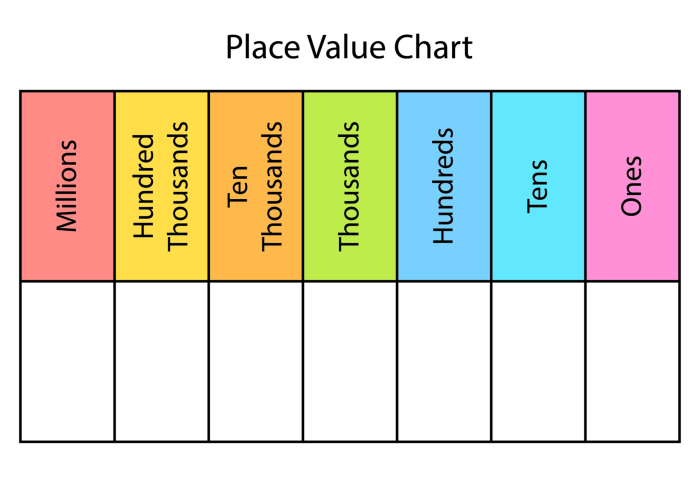In this activity, you will need to use your place value knowledge to answer a variety of questions.
Let's recap the place value of numbers, including those in the millions, using a place value chart.

| 1 | 9 | 0 | 1 | 4 | ||
| 7 | 0 | 4 | 3 | 1 | 6 | 7 |
| 9 | 0 | 0 | 2 | 8 | 7 | 9 |
By looking at this chart, you need to able to recognise the value of each column and understand why it is written like that.
Remember, it can be helpful to read larger numbers in groups of three:
19 thousand, then 14
7 million, then 43 thousand, then 167
9 million, then 2 thousand, then 879
We use commas to separate large numbers into chunks that are easier to read:
19,014
7,043,167
9,002,879
Expanded notation:
During this activity, you will be asked to convert numbers into expanded notation. This is also called 'partitioning'.
Remember, when using expanded notation to break apart each number into separate digits and always work from left to right.
Example:
4,246,936 = 4,000,000 + 200,000 + 40,000 + 6,000 + 900 + 30 + 6
Over to you now to use your place value skills to tackle a range of questions.







